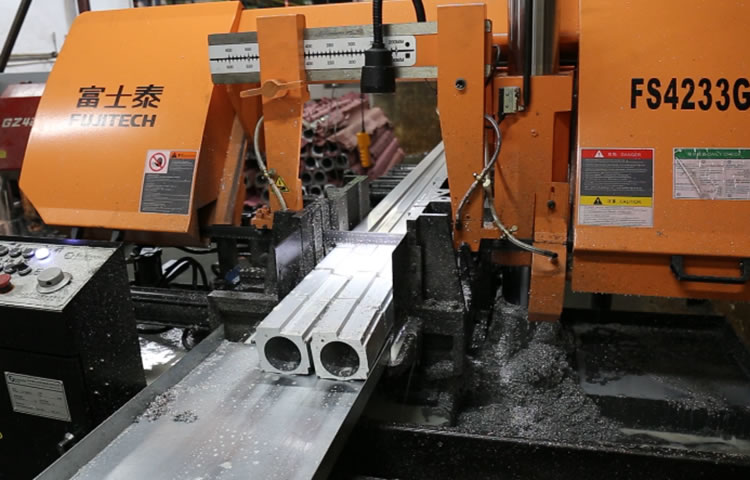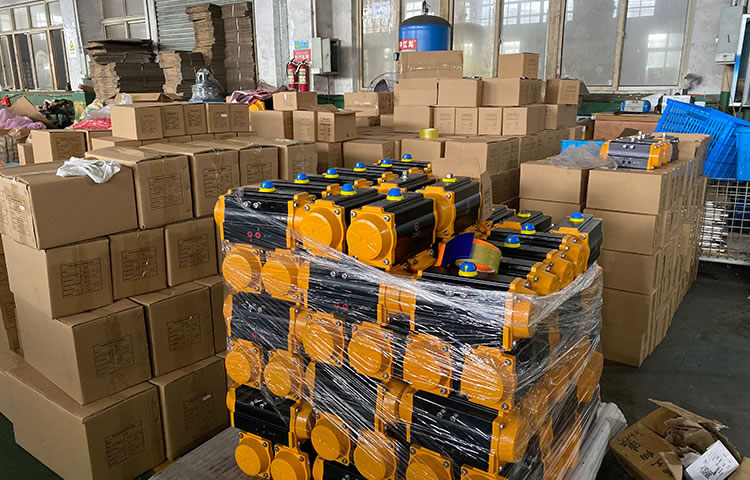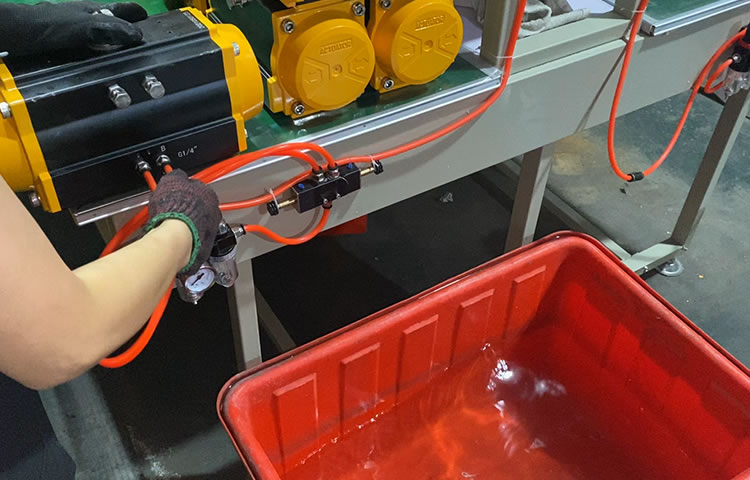Pneumatic Actuator
Elevate Your Efficiency with Advanced Pneumatic Solutions.
Elevate Your Efficiency with Advanced Pneumatic Solutions.
Electro-Pneumatic Valve Positioner accurately controls valve stroke in response to an input signal of 4 ~ 20 mA from the controller.
The mechanical valve positioner is designed to work according to the force balance principle. Its working principle is shown in the figure below. Taking the positive action of the valve as an example, when the signal pressure flowing into the bellows increases, lever 2 is rotated around the fulcrum, and the baffle is close to the nozzle. After the nozzle back pressure passes through the amplifier, the air source is sent to the air chamber of the diaphragm actuator, causing the lever to move toward the valve. It moves downward and drives the feedback stem (the pendulum rod) to rotate around the fulcrum. The feedback cam (eccentric cam) connected to the same axis also rotates counterclockwise. The roller causes lever 1 to rotate around the fulcrum and stretches the feedback spring. , when the pulling force of the spring on lever 2 and the force of the signal pressure on the bellows reaches a moment balance, the instrument reaches a balanced state. At this time, a certain signal pressure corresponds to a certain valve position.
When in reverse action, simply turn the cam over.
Zero point and range are inaccurate. Due to inaccurate debugging during the positioner installation process or on-site vibration, temperature changes, changes in the valve stem stroke of the regulating valve, changes in the feedback rod, etc., the minimum and maximum openings of the regulating valve are inconsistent with the signals in the control room. As a result, the signal output by the positioner cannot fully close and fully open the regulating valve, resulting in large and limited leakage. During on-site debugging of the positioner, you should first ensure that the regulating valve operates well. The feedback system is firmly installed, and then adjustments through standard signals. Make the stroke of the regulating valve consistent with the control signal.
The orifice is clogged, and dirt blocks the orifice, causing the positioner to have no output signal and causing the regulating valve to not operate.
There is dirt between the nozzle and the baffle. Affected by the site, a layer of dust will adhere to the positioner after being used for some time, affecting the back pressure of the nozzle baffle, and thus affecting the output of the positioner.
The sealing is not good. The various fastening nuts and sealing gaskets of the positioner that have been used for a long time are prone to loosening and aging, causing air leakage in the positioner. The regulating valve cannot be fully opened or fully closed, and the valve position is unstable, resulting in regulatory oscillation.
Feedback lever failure. During long-term operation, the feedback rod fastening nut casting becomes loose or even falls off, causing the feedback rod to become loose, skewed, and stuck with the fixing parts. The regulating valve moves slowly, fluctuates frequently, and the regulating valve is limited or even loses control. The limit spring on the feedback plate falls off, or the feedback rod comes out of it, resulting in poor contact between the feedback rod and the feedback plate, resulting in lag and frequent movement of the regulating valve. It is difficult to stabilize the controlled parameters.
The fixing nut is loose and the positioner fixing nut is not installed securely, causing the positioner to be skewed, affecting the action of the feedback lever and causing jamming. Make the regulating valve action unstable. The fastening nuts of each spring in the positioner are loose, which changes the preload amount of the spring and affects the tension and state of the spring. Change the positioner to zero point.
The position of the permanent magnet changes. Due to the action of external force, the position of the two magnets changes, changing the position of the magnetic field. The force on the coil is unbalanced, and the output of the positioner is not linear, causing the control valve action to be non-linear. Magnets absorb impurities such as iron filings. The jam will hinder the movement of the baffle, causing the positioner output to be inaccurate.





Based on a wealth of experience, YUECHI has the knowledge to provide reliable and appropriate automotive solutions for valve applications. General technical attributes for product selection include:

valve type, operating pressure, valve size, sealing type(hard sealed and soft sealed options) ,media and operating temperature

Double-acting and spring-return configurations (normally closed and normally open options)

Double-solenoid or single-solenoid, supply voltage, explosion-proof type

Basic or explosion-proof type

Current signal, air supply signal, electric-pneumatic converters, explosion-proof grade

Air filter, Solenoid Valve, Limit Switches Box

De-clutch able wormgear

Accessories of designated brand